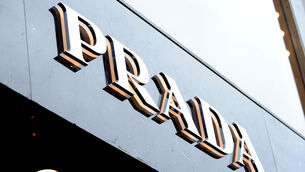David has a wash after 500 years
The controversial cleaning of David is complete, with decades of grey grime stripped from Michelangelo’s towering tribute to nude male beauty months ahead of 500th anniversary celebrations for the masterpiece.
Bathed in natural light streaming through the dome of Florence’s Accademia Gallery, the sculpture of the young biblical hero who took on Goliath appeared more radiant today than it did before the cleaning.
The restoration resumed in September after an aborted start when the original restorer quit in a dispute over how the statue should be cleaned.
David draws 1.2 million admirers a year, making it one of the art world’s biggest draws.
While experts said today that the restoration proceeded without hitches, the scrutiny exposed what appeared to be fragility of the statue’s ankles, which support more than six tons of dead weight.
Plans are being made for a conference of engineers to discuss might be done about the 13.5 foot tall sculpture’s stability.
After the restoration, “David is still itself, only what has changed is his luminosity,” said restorer Cinzia Parnigoni, who, working on top of scaffolding for months, applied “mud packs” of cellulose pulp and clay to soak away the dirt as tourists gawked.
After months of restoration, the sculpture is “less cold”, she said.
Parnigoni replaced another respected restorer, Agnese Parronchi, who feared water could harm the surface.
With dirt removed, the bulging veins in “David’s right arm seem more striking, as does the natural veining of the block of the badly flawed marble, which challenged Michelangelo.
“It was as if a light grey veil was removed” from the statue, said gallery director Franca Falletti.
Leading an unsuccessful petition drive to halt the restoration was James Beck, the Columbia University art professor known for his vigorous denunciation of the restoration of Michelangelo’s frescoes in the Sistine Chapel as too harsh.
In addition to distilled water, mineral spirits were applied to remove centuries’ buildup of candle wax, and ”age spots “ – blotches of sulphate deposits – were chipped away with a scalpel-like instrument.
But some spots resisted cleaning, like some yellow streaks on the lower left foot and the violet-hued stains on David’s back believed to have been caused by mould, said Laura Speranza, an Opificio official who monitored the restoration.
Those stains were left alone.
David has weathered a lot more than controversy since being unveiled in September 1504. In 1527, the statue was damaged during a riot in Piazza Signoria, Florence’s main square.
The statue survived an 1843 cleaning with chloric acid – a method unthinkable by scientists, engineers and others today developing new restoration approaches.
The masterpiece was installed in the gallery in 1873 to help protect it, but in 1991 an Italian painter smashed the second toe of the left foot with a hammer.
Celebrations are planned in Florence for the work’s 500th anniversary in September.













